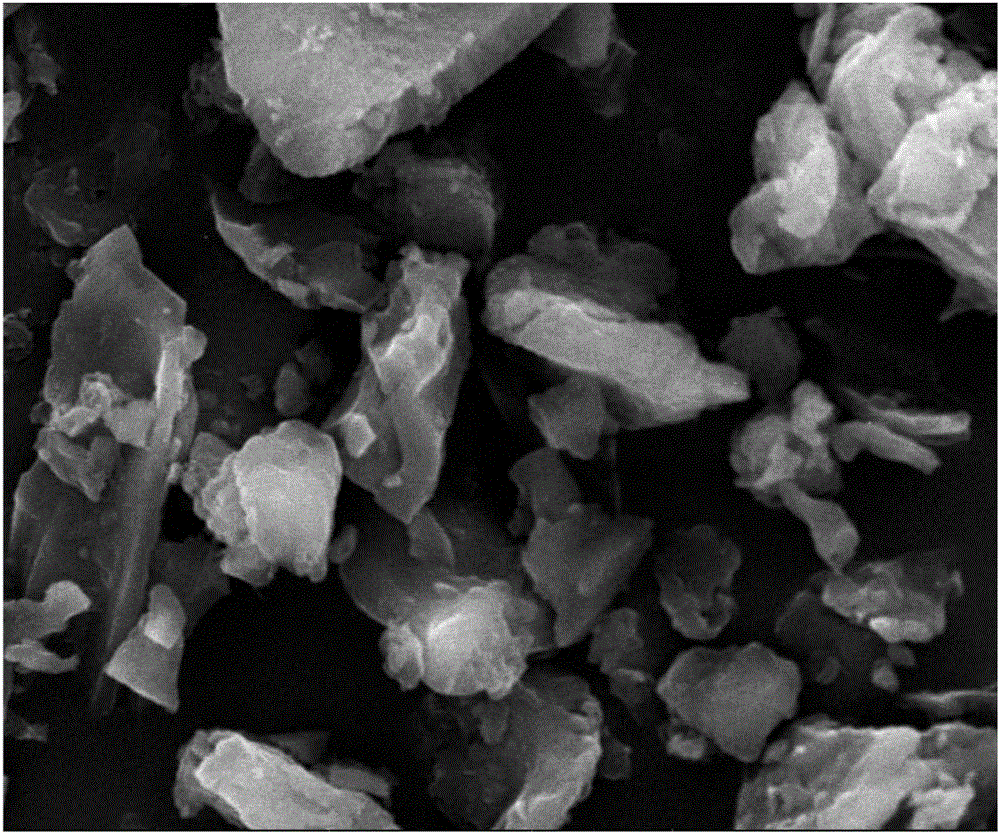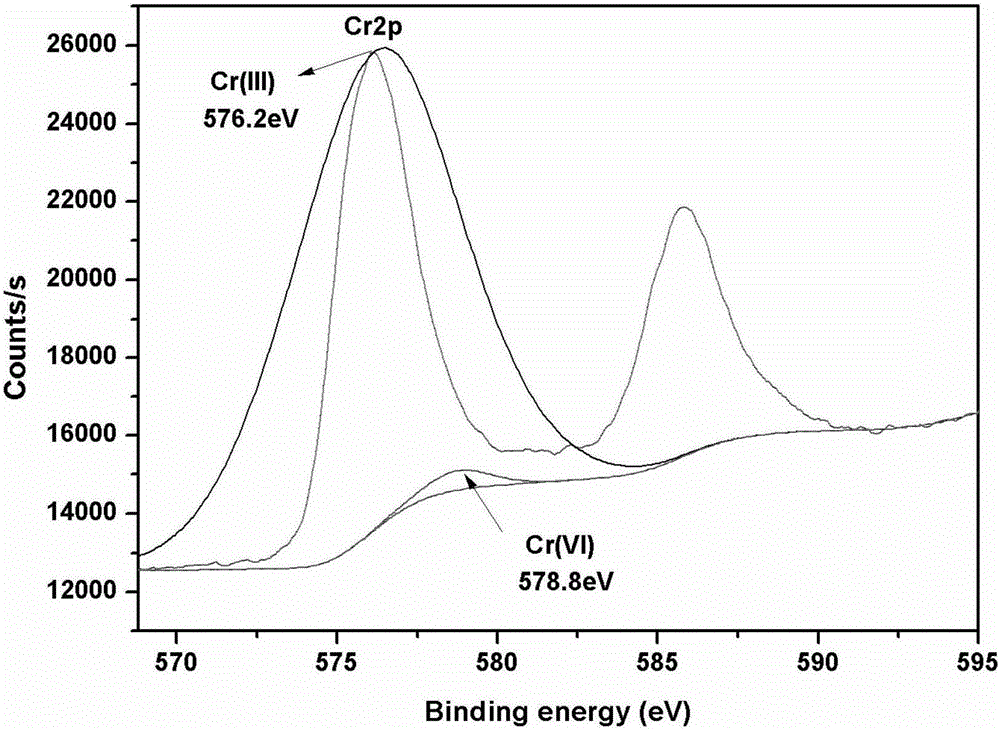Method for removing hexavalent chromium in wastewater by using beta-cyclodextrin chitosan and walnut shell biochar compounded adsorbent
A technology of β-cyclodextrin and chitosan, which is applied in the fields of adsorption water/sewage treatment, chemical instruments and methods, water pollutants, etc., can solve the problems of low production cost, limited application, limited hydrophobic area and limited catalytic activity, etc. Achieve the effect of low cost, easy surface functional groups, and more surface functional groups
- Summary
- Abstract
- Description
- Claims
- Application Information
AI Technical Summary
Problems solved by technology
Method used
Image
Examples
Embodiment 1
[0025] A kind of β cyclodextrin chitosan walnut shell biochar composite material of the present invention, this composite material is prepared by following method:
[0026] (1) Dissolve 6g of β-cyclodextrin and 1g of chitosan in 120ml of 1mol / L hydrochloric acid solution, add it into a three-necked bottle, stir evenly to obtain a milky white solution, and when it is heated to about 85°C and becomes colorless, add 50 % glutaraldehyde 3ml, continue to heat the reaction for 1h and then turn light yellow and take it out;
[0027] (2) After the product in (1) is adjusted to a pH value of 7 to 8 and turns brown with a 1mol / L NaOH solution, cool, precipitate, filter, and dry to obtain a β-cyclodextrin chitosan product;
[0028] (3) Put the dried and ground walnut shell biomass into a tube furnace at 300-600°C, 2 , Burn for 1-2 hours to get walnut shell biochar. Wash the obtained magnetic biochar with deionized water for 2-3 times, dry at 50-60°C, grind, and pass through a 150-mesh ...
Embodiment 2
[0032] The β cyclodextrin chitosan walnut shell biochar composite material prepared by embodiment 1 is applied to the treatment of hexavalent chromium ion wastewater, comprising the following steps: configure 8 parts of 100mg / L chromium solution, use 1mol / L NaOH and HCl adjusted pH to 2, 3, 4, 5, 6, 7, 8 and 9, respectively. Add the above-mentioned β-cyclodextrin chitosan walnut shell biochar composite material, and the amount of adsorbent is 0.1 g / L. They were placed in constant temperature shaking at 25°C. The rotating speed of the constant temperature oscillator in the water bath is 160rpm, and the shaking time is 24h. After the reaction is over, put it on filter paper for filtration or static precipitation to get the upper layer solution, separate the adsorbent from the solution, and the adsorption process ends. The content of unadsorbed hexavalent chromium in the wastewater was determined by ultraviolet spectrophotometry, and the calculated adsorption results are shown ...
Embodiment 3
[0037] The β cyclodextrin chitosan walnut shell biochar composite material prepared by embodiment 1 is applied to the treatment of hexavalent chromium ion wastewater, comprising the following steps: getting 50mL initial concentration is the hexavalent chromium solution of 100mg / L, adjusting the concentration of the solution The pH value is 2.0, add the β cyclodextrin chitosan biochar composite material that embodiment 1 makes, the consumption of this composite is 0.1g / L, carry out adsorption in the constant temperature water bath shaker of 25, 35 and 45 ℃ respectively Reaction, the speed of the water bath constant temperature oscillator is 160rpm, after 24 hours, take it out and place it on filter paper to filter or statically precipitate to get the upper layer solution, separate the adsorbent from the solution, after the adsorption process is over, use UV spectrophotometry to measure the unadsorbed in the waste water. The content of hexavalent chromium and the calculated adsor...
PUM
| Property | Measurement | Unit |
|---|---|---|
| concentration | aaaaa | aaaaa |
| adsorption capacity | aaaaa | aaaaa |
| adsorption capacity | aaaaa | aaaaa |
Abstract
Description
Claims
Application Information
 Login to View More
Login to View More - R&D Engineer
- R&D Manager
- IP Professional
- Industry Leading Data Capabilities
- Powerful AI technology
- Patent DNA Extraction
Browse by: Latest US Patents, China's latest patents, Technical Efficacy Thesaurus, Application Domain, Technology Topic, Popular Technical Reports.
© 2024 PatSnap. All rights reserved.Legal|Privacy policy|Modern Slavery Act Transparency Statement|Sitemap|About US| Contact US: help@patsnap.com










